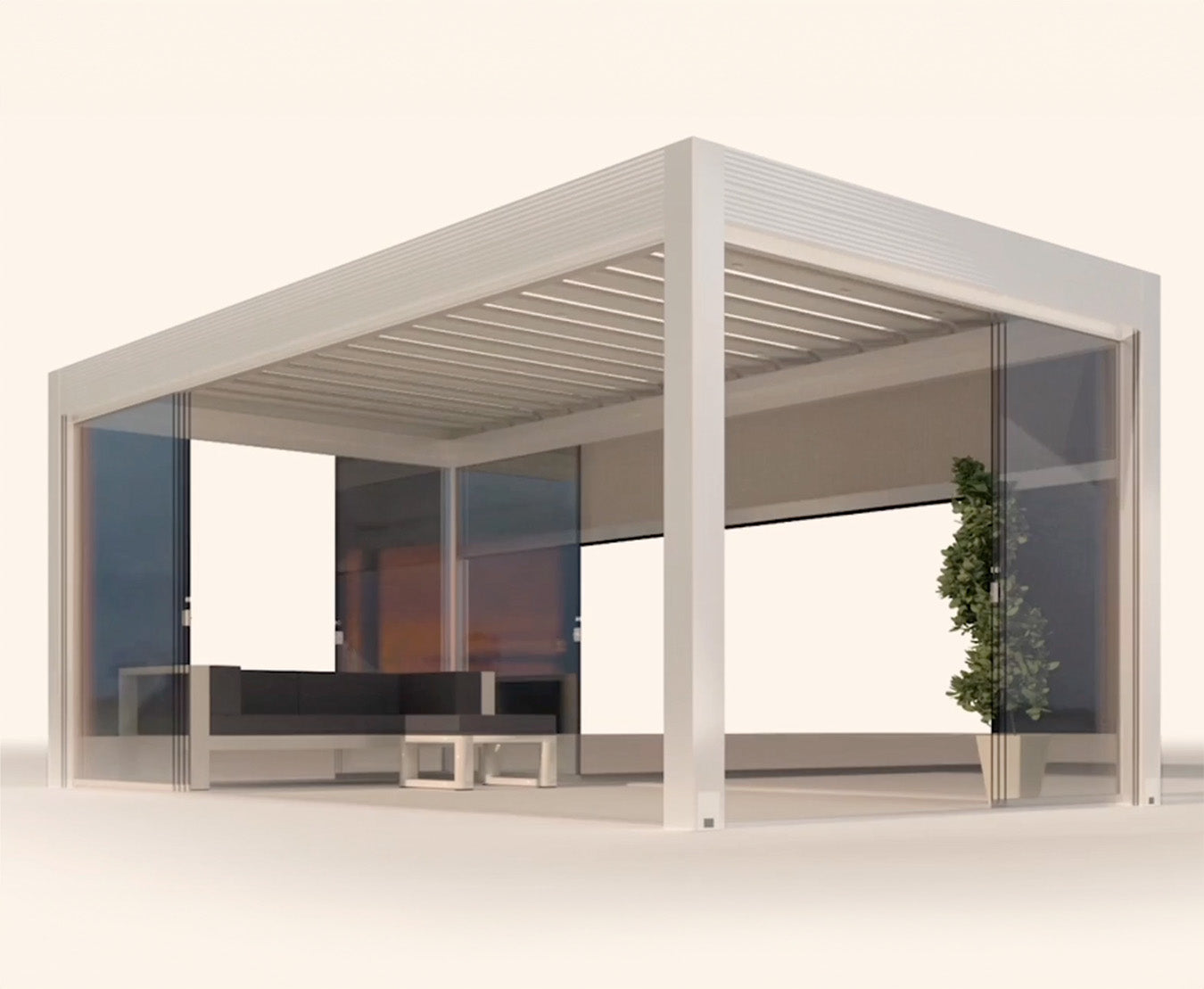At Outside Structures, we know the biggest question for homeowners and hospitality venues is simple: “Can I actually use my bioclimatic pergola in winter?”
The answer is yes, and with the right enclosure, a bioclimatic (louvred) pergola becomes a true all-season living space. By adding roller screens or glass sides, you can protect against wind, rain, and cold, while still enjoying a stylish connection to the outdoors.
Why Enclose a Pergola for Winter?
A bioclimatic pergola already keeps you dry with its adjustable roof slats and integrated drainage. But sides make a huge difference in winter:
· Warmth retention: Stops draughts, holds heat in, and makes outdoor heaters more effective.
· Year-round comfort: Keep using your outdoor dining area through autumn storms and frosty evenings.
· Seasonal flexibility: Perfect for festive family gatherings or for venues boosting capacity at Christmas.
Option 1: Roller Screens (Zip Screens)
Roller screens are a flexible way to enclose your pergola.
Benefits:
· Wind resistant: High-quality zip screens are tested to withstand strong gusts.
· Adjustable: Raise or lower them depending on the weather.
· Glare control: Fabrics block low winter sun while keeping light levels comfortable.
· Discreet: When retracted, they disappear into a slim cassette.
Best for: Homeowners who value flexibility, or restaurants and cafés that need to switch quickly between open and enclosed spaces.
Option 2: Glass Sides
Sliding or fixed glass panels give your pergola a high-end finish and provide maximum protection.
Benefits:
· Superior insulation: Retains heat more effectively than fabric.
· Premium aesthetic: Frameless glass creates a luxury “garden room” feel.
· Weatherproof: Shields against rain, wind, and noise year-round.
· Low maintenance: Glass requires only periodic cleaning.
Best for: Homeowners and venues looking for a fully enclosed, all-weather extension of their living or dining space.
Which Keeps You Warmer?
For insulation, glass is unbeatable. It traps heat and makes heaters more efficient. However, roller screens offer flexibility and ventilation, preventing condensation build-up. Many of our clients choose a combination: glass on the most exposed side, and roller screens on the others.
Things to Consider Before Choosing
Planning permission: Adding sides can affect whether your pergola remains classed as a “temporary” structure. Always check with your local authority if unsure.
· Heating: Pair your enclosure with infrared heating for maximum comfort.
· Budget: Roller screens are more cost-effective; glass is a long-term investment.
· Lifestyle: Screens suit adaptable outdoor living, while glass creates a permanent feel.
Outside Structures’ Expertise
At Outside Structures, we specialise in bioclimatic pergolas with enclosure options, from roller screens to sliding glass walls and integrated heating. Our expert team designs, supplies, and installs across Cambridgeshire, Hertfordshire, Essex, and the South East, helping clients enjoy outdoor living 365 days a year.
Conclusion
So, can you enclose a bioclimatic pergola for winter? Yes, with roller screens for flexibility, glass for warmth, or a mix of both. Whichever option you choose, you’ll unlock the full potential of your outdoor space, even in the coldest months.
👉 Discover our bioclimatic pergolas and enclosure options and speak to our team today about creating your perfect winter-ready outdoor living space.

